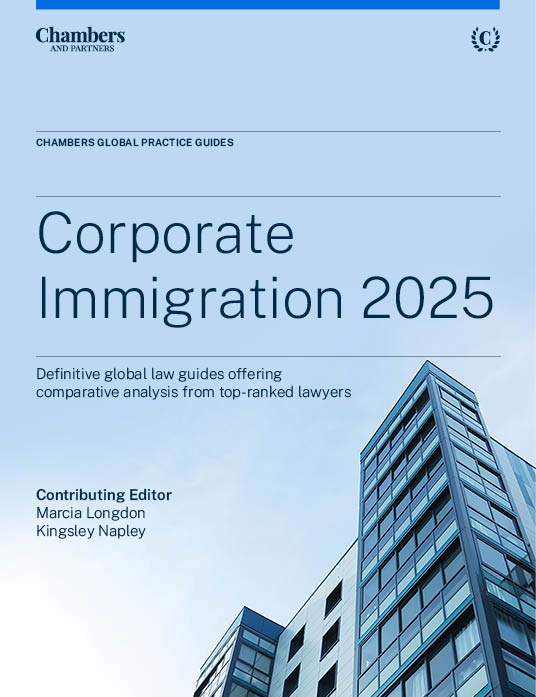
Corporate Immigration 2025
The Corporate Immigration 2025 guide features over 20 jurisdictions. The guide provides the latest legal information on nations’ corporate immigration policies, visa options and requirements, immigration processes and the costs involved, immigration enforcement systems, and the rules around accompanying family members.
Last Updated: June 24, 2025
Compare law and practice by selecting locations and topic(s)
Select Locations

Select Topic(s)

Please select at least one location and one topic to use the compare functionality.
A Global Overview of Immigration in 2025
Following a period in which more than half the population around the world had political elections, the last 12 months have seen the resulting implementation of wide-ranging immigration policies and changes. Debates on immigration span all sectors and industries, and global employers have to respond rapidly to changes in order to maintain their talent pool across key locations.
This guide provides an overview of immigration by country, outlining the main migrant pathways and relevant factors, such as key requirements, costs and timelines. It also examines any trends and upcoming changes in immigration policy for each country.
Below are some key themes over the last 12 months that will continue to influence immigration policy. These topics will be particularly important for employers of an international workforce, as the landscape of talent sourcing and retention becomes more complex and diverse. How organisations adapt to these challenges will play a crucial role in their future success.
Global events and immigration policies
Exceptional political and economic turbulence across global economies, coupled with multiple conflicts and tensions, has led to waves of new immigration policies. Forced migration remains high and continues to contribute to the political debate and public opinion on immigration. Immigration rules remain volatile and subject to swift changes.
Countries are generally balancing the protection of local workers on the one hand and addressing any skills shortages on the other. Points-based immigration applications remain popular, with some countries – including Singapore, Indonesia and the UK – developing tougher approaches where only the most skilled and highly paid workers can be sponsored, while others – such as Germany, Portugal and Japan – are reshaping their immigration frameworks to tackle labour shortages and attract more foreign skilled workers.
End-to-end digitalisation
Across the world, countries continue to move towards fully digital immigration systems. Through efficient online application processes, digital visa statuses and border crossing procedures, countries seek to cut down on the cost of processing applications, improve applicant journeys and decrease backlogs.
This year, Nigeria, Poland, Austria, Portugal and Indonesia are rolling out further automated digital visa systems. Border controls are increasingly using pre-travel authorisation checks for those eligible for visitor visa-waiver programmes. The Electronic Travel Authorisation scheme has been fully implemented in the UK over the last 12 months, and EU member states are preparing the equivalent European Travel and Information Authorisation System for 2026.
Prevention of illegal working and compliance
Sponsors and employers using immigration systems need to implement increasing vigilance and resources to deal with compliance requirements. Several countries are tightening regulations to prevent illegal working and ensure compliance with immigration laws. In the Netherlands, a new penalty system has been introduced, imposing fines on employers that hire foreign workers that do not have work permission. Similarly, Japan is closely monitoring foreign workers' compliance with national health insurance and pension payments, and Panama has introduced stricter financial penalties. Travellers and employers can expect further digital compliance measures, including automated tracking of the number of days spent in a country for immigration, citizenship and tax purposes, and automated checks on payroll tax records.



